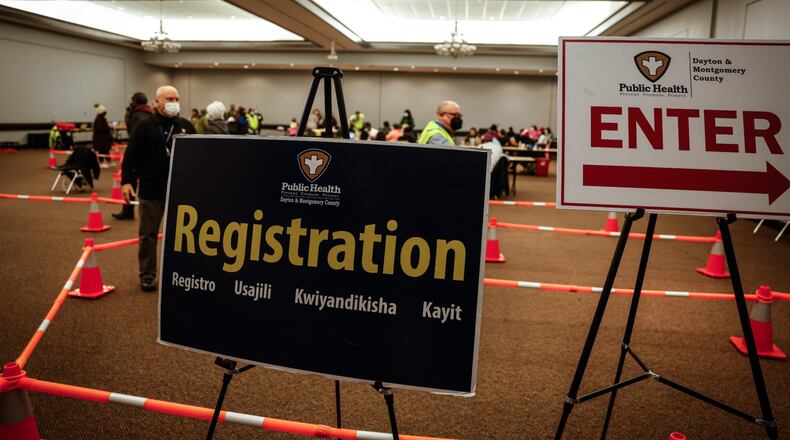“Although those variants are currently at low levels in the U.S., it’s reasonable to expect that as we head into the colder months we could see them drive another wave,” he said. “This could coincide with the holiday season and the opportunity for larger indoor gatherings.”
Overall COVID cases and hospitalizations have dropped in recent weeks, with the state recording fewer than 10,000 weekly cases for the last two weeks, according to ODH.
Cases have dropped nearly 30% over the last two weeks and hospitalizations have decreased about 25% in the past two months in Ohio, Vanderhoff said.
Last Thursday also marked the second straight week the state reported fewer than 400 hospitalizations.
As of last week, Lucas County was the only county in Ohio that met the Centers for Disease Control and Prevention’s standards for high COVID community levels. Champaign and Clark counties were the only local counties at a medium level, with the rest of the Miami Valley at low.
Though the state is seeing fewer cases and hospitalizations, health officials warned the virus isn’t gone.
New subvariants have shown some ability to evade antibodies, Vanderhoff said. Meaning the variants could make more people sick.
However, there’s no indication the subvariants can break through B and T cell immunity, he said.
“If you are not vaccinated or boosted, now is the time,” Vanderhoff said. “You can acquire significant protection before these new variants become widespread.”
Some people may want to wear masks in crowded areas again and anyone who feels sick should stay home. Those showing symptoms of coronavirus should get tested.
Therapeutic treatments are available for people who test positive for the virus. Anyone who has a high-risk for serious illness should contact their doctor immediately to determine their treatment plan.
“We are in a much better place both in options and in access,” said Dr. Steven Gordon, chairman of the Cleveland Clinic Department of Infectious Disease. “All available treatments are in adequate supply for the demand that we’re seeing.”
While it is difficult to predict how new subvariants will impact the U.S., Gordon said it’s important to use the tools we have right now to prevent severe illness and death.
About the Author
